Do you ever notice flea dirt on cat?
Have you noticed tiny black specks on your cat’s bedding, collar, or fur during your cuddle sessions? These specks, commonly called “flea dirt,” can be a telltale sign of fleas on your furry friend.
Flea dirt is essentially flea feces, also known as flea droppings, and it’s composed of digested blood and flea eggs, which means if you’re spotting it, your cat is, unfortunately, serving as a snack and potential breeding ground for these pesky parasites.
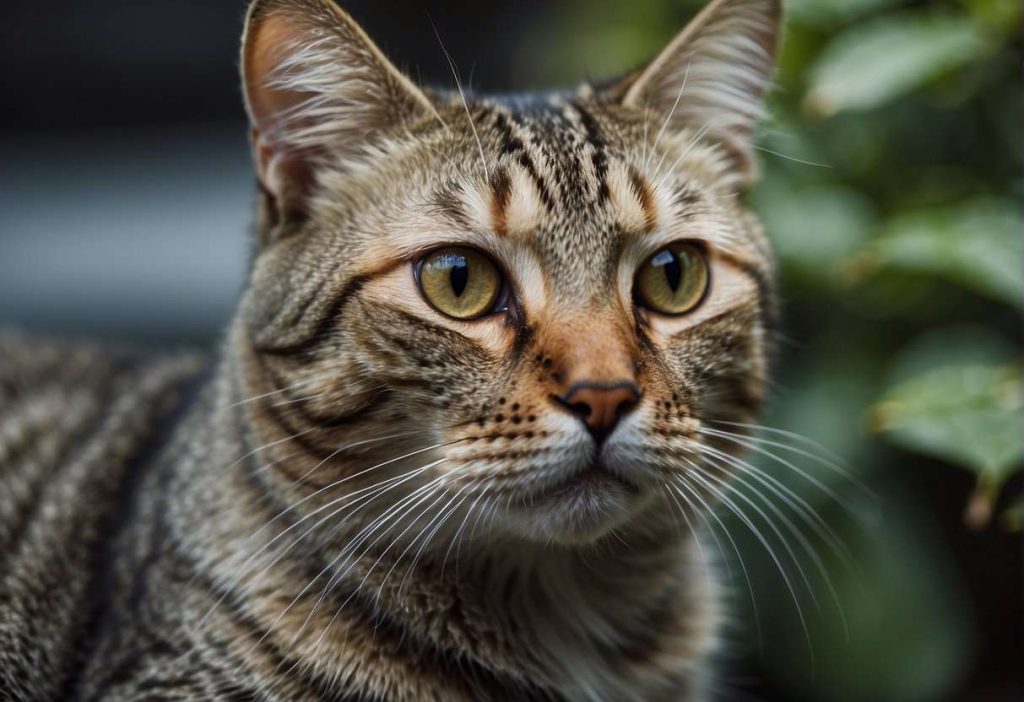
Why, you ask, is this tiny dirt-sized evidence something to pay attention to?
Well, flea dirt doesn’t only suggest your cat has unwelcome guests; it also alerts you to the potential for a range of health problems, including potential diseases.
From skin irritations to infections and even more serious blood-loss-associated conditions, caused by flea saliva, these fleas can wreak havoc on your cat’s health.
Spotting and addressing flea infestations early can keep your cat happy, healthy, and itch-free.
Key Takeaways
- Flea dirt is flea feces composed of digested blood and indicates a flea infestation.
- Identifying flea dirt promptly is crucial for preventing health complications in cats.
- Regular grooming and environmental management are key to controlling flea presence.
Identifying Flea Dirt on Cat
Ever wondered what those tiny black specks in your cat’s fur are?
If you see something that resembles pepper flakes on your cat’s bedding or their favorite lounging spot, they’re likely hosting an unwelcome visitor—fleas.
Flea dirt, also known as flea excrement, is, quite simply, flea feces and a clear sign of a flea infestation on your feline friend. (1)
The good news is that identifying flea dirt is relatively easy, as it looks like specks of black pepper on your furniture, carpets, and clothing.
If you suspect fleas, the easiest way to check is to take a damp white cloth or piece of paper and brush the infected area.
Visual Identification Guide
Identifying flea dirt against the myriad shades of cat fur can be like finding a needle in a haystack. Here’s what you should look for:
- Black Specks: Flea dirt looks like small, black, or dark brown specks similar in size to grains of sand.
- Location: Typically found around the neck, back, and near the tail, these tell-tale dots are a reliable indicator of fleas.
Images for Reference:
- Pale-Furred Cats: Flea dirt is more visible against light-colored fur.
- Dark-Furred Cats: With darker fur, flea dirt is trickier to spot; look for inconsistency in fur coloration or use a flea comb.
Conducting a Flea Dirt Test
Curious to know if those black specks are flea dirt? Let’s carry out a simple home test.
- Gather Your Gear: You’ll need a wet paper towel or a piece of white paper. (2)
- Collect the Specks: Gently comb your cat with a flea comb over the paper.
- Moisture Magic: Dampen any black flecks and press down.
The result? If they turn a reddish-brown color, it’s flea dirt, which is essentially blood left behind by these pesky parasites.
This color change happens because fleas consume your cat’s blood, and what you’re seeing is that blood digested and excreted by fleas.
Hey, don’t fret! Identifying flea dirt is the first step in reclaiming your pet’s comfort and health. A trip to the vet or a high-quality flea control treatment can soon have them purring with relief.
Immediate Actions and Treatment Strategies
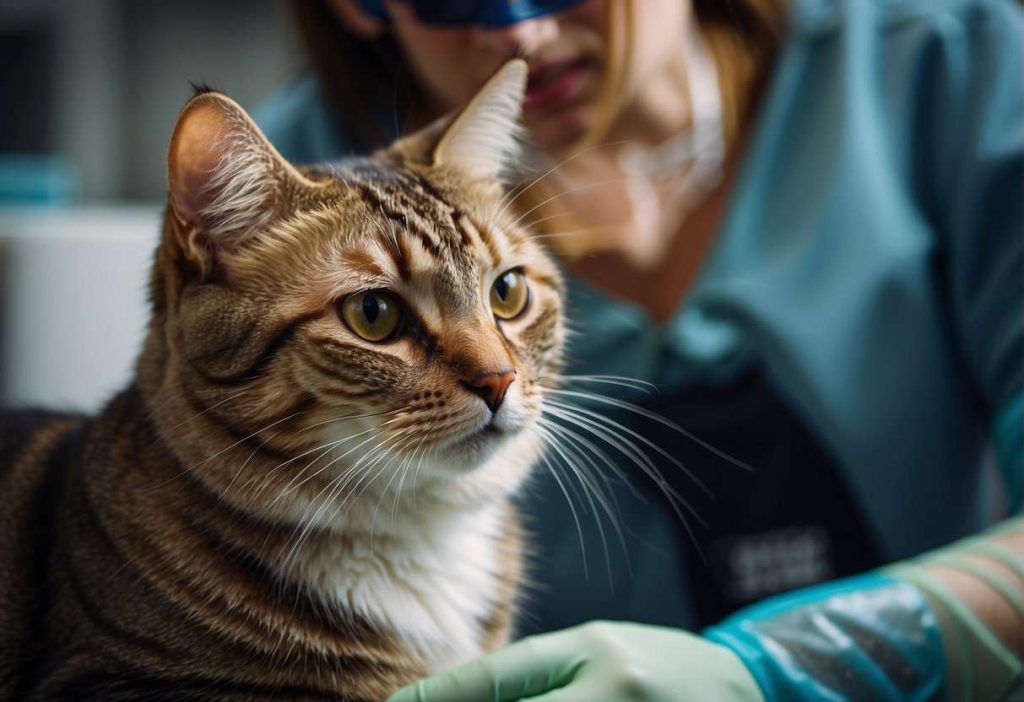
Immediate Actions to Take Upon Identifying Flea Dirt
Hey there! Notice some suspicious, pepper-like specks on your furry friend’s bedding? It could be flea dirt—icky, but fixable! Here’s what to do first:
- Isolate your cat in a flea-free area to prevent further spread.
- Wash all bedding on a high-heat cycle to kill any fleas or eggs.
- Vacuum your home thoroughly, especially where your cat lounges.
Commercial Flea Treatments
So, what’s next on your flea-busting mission? Commercial treatments! They’re effective and come in different forms, such as:
- Topical solutions: Easy to apply! Be mindful of the dosage based on your cat’s weight.
- Oral medications: Quick pills or chews that do the job from the inside out.
- Shampoos: Great for a deep clean, but may need to confirm with your vet first.
- Sprays and powders: Directly applied to the coat—avoid the face and always follow the instructions.
Natural and Home Remedies
Want to go the all-natural route? You’ve got options!
- Flea combs: These fine-toothed combs can help you remove flea dirt and fleas manually.
- Diatomaceous earth: A non-toxic powder that’s deadly to fleas but safe for pets.
- Apple cider vinegar: Some say a diluted mix can repel fleas. Just test it on a small area first.
Remember, while natural methods can be effective, they may take more time and diligence. Always double-check with your vet before trying new treatments to ensure your cat stays safe and healthy. (3)
Happy flea fighting!
Understanding Flea Infestations and Health Implications
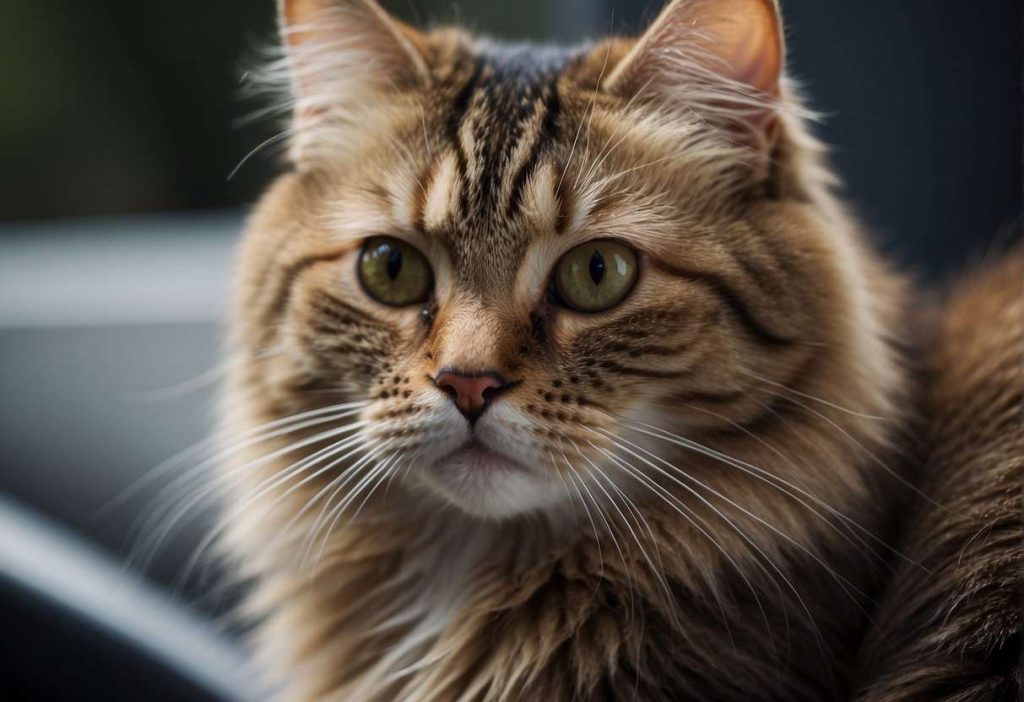
These tiny vampires go through a cycle that could rival the worst of reality TV dramas; it starts with an adult flea hopping aboard your cat, laying eggs, and then those eggs developing into flea larvae, pupae, and eventually new adults ready to continue the saga.
Every step of this cycle happens right in your cat’s fur, potentially leading to health issues such as cat scratch fever.
Breaking the Flea Life Cycle:
- Adult Fleas: Hop onto your cat, start the feast, and lay eggs.
- Eggs: Fall off into your home, lurking in carpets and couches.
- Larvae: Emerge from eggs, dodging the vacuum as they nibble on organic matter.
- Pupae: Cocoon stage where they plot their grand entrance.
- New Adults: Emerge, jump onto your cat, and the cycle loopy-loops.
Stopping this cycle is like hitting the pause button on this pesky reality show. You’ve got to tackle all life stages, not just the adults you see making your cat’s life itchy! (4)
Now let’s chat about those long-term health effects, shall we? Fleas are more than a nuisance; they can lead to serious health problems:
- Iron-Deficiency Anemia: Fleas can drink their body weight in blood in one day. Yikes! Imagine a tiny creature swiping that much blood from you!
- Allergic Reactions: Flea bites can cause an allergic skin reaction known as flea allergy dermatitis (FAD), making your kitty miserable with itchiness.
Remember, ridding your cat of fleas keeps them healthy, so regular flea checks are better than cure.
While addressing flea infestations, it’s also crucial to be vigilant about fungal infections in cats, as the compromised skin from flea bites can become an entry point for such infections, further emphasizing the need for comprehensive flea control and skin care.
Keep an eye out for those tell-tale signs: scratching, biting, and oh, the flea dirt—those little black specks that speak of a flea’s dinner party hosted by your cat.
Stay vigilant, and keep your whiskered companion happy and healthy by using flea shampoo and flea combs for multiple rounds of shampooing to remove all fleas and flea dirt with a thorough bath.
Preventive Measures and Environmental Management

Preventing these unwelcome guests is key to keeping your feline friend happy and healthy.
Regular Flea Prevention Tips: Let’s tackle prevention first. There’s a range of products out there, so which is right for your cat?
- Topical treatments: These liquid solutions, applied to your cat’s skin, can repel fleas effectively.
- Oral medications: A pill might be easier if your cat isn’t fond of topical treatments. (5)
- Flea collars: Infused with chemicals that repel fleas, these can offer another line of defense.
Remember to consult your vet before choosing a flea-prevention product to ensure it’s safe and appropriate for your kitty.
Implementing a comprehensive cat flea prevention strategy, including regular use of vet-recommended flea treatments and maintaining a clean living environment, is crucial in protecting your cat from flea infestations and the associated health risks.
Environmental Flea Management: You’re not just looking after your cat, but your home too! Fleas can lay eggs in carpets and bedding, creating a cycle of infestation.
- Vacuum regularly: Hit the floors, furniture, and anywhere your cat lounges. Vacuuming picks up fleas in all stages of their life cycle.
- Wash bedding frequently: Hot water is your best bet here, both for your cat’s bedding and yours.
- Use flea treatments in your home: Sometimes, you need to use a spray or a bomb — just be sure to follow the instructions carefully.
Mixing up your cleaning routine with these tips can keep those pesky fleas at bay. Your cat’s comfort and your peace of mind are worth that extra bit of effort, right?
Keep things clean and stay vigilant with preventive treatments, such as monthly preventative, as they are the best way to prevent fleas. (6)
By being consistent with flea preventives, you can ensure that your cat and other pets in your household are protected from these pesky pests.
Special Considerations and User Experiences
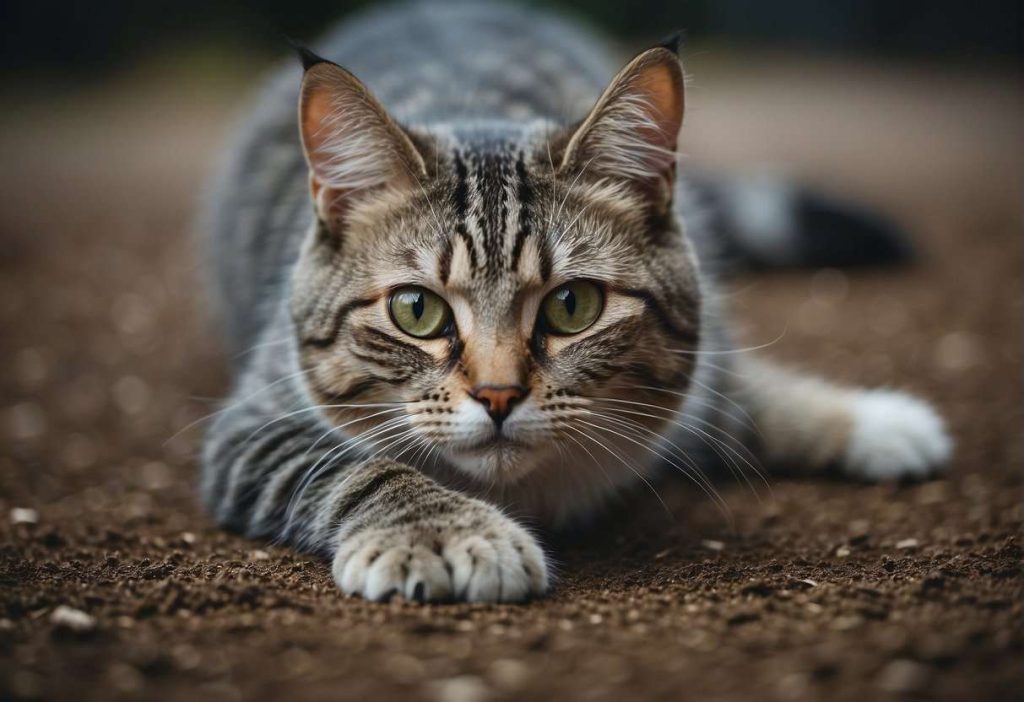
Let’s chat about a few things you should keep in mind and some real anecdotes from fellow cat parents who’ve been in the trenches.
Breed-Specific Advice: Every cat is unique, especially when it comes to different breeds. For example:
- Long-haired breeds like Persians need extra grooming to spot flea dirt hidden in their luxurious coats.
- Sphinx cats, with their lack of fur, may show flea dirt more clearly on their skin, so keep a vigilant eye.
User Experiences: Jane, a Maine Coon mom, shares:
- “Brushing regularly was key. Discovered flea dirt during our grooming sessions, and was able to tackle it head-on with vet-recommended treatments!”
Tom, who has a dapper Siamese, found that:
- Environment matters. “Regular cleaning reduced flea re-infestation drastically. I vacuumed often and washed bedding weekly.”
Quick Tips Table:
| Breed | Consideration | User Tip |
| Long-haired | Thorough combing required; monitor skin closely | “Regular grooming is essential” |
| Short-haired | Easier to spot; maintain cleanliness | “Keep your house flea-free!” |
| Sphinx/Naked | No fur; check skin | “Bath time helps spot flea dirt” |
Remember, keeping your cat happy and healthy is a team effort—between you and your feline friend. Have you found similar success stories or unique breed-specific tips in your journey?
Share them, and let’s keep our kitty compadres comfortable!
Additional Resources and Expert Advice

They’re the go-to experts on flea treatment and can give you the best advice tailored to your furry friend’s needs.
For deep dives into flea dirt and its implications, check out some stellar resources:
- Comprehensive Guides: Websites like PetMD offer thorough insights on fleas and how to handle them.
- Veterinary Advice Online: Look for veterinary blogs and Q&A sections where you can directly ask professionals your pressing questions.
Remember, every cat is unique. What works for some may not work for yours. So, while it’s great to do your homework, your vet’s personalized plan will take the cake (or the treat!).
Let’s tackle those pesky fleas head-on! Here’s what you can do:
- Book an appointment with your vet for a flea treatment strategy.
- Stay proactive with flea prevention to keep those little black specks at bay.
Keep your cat happy and healthy by staying one step ahead of fleas. You’ve got this!
Product Comparison and Interactive Elements
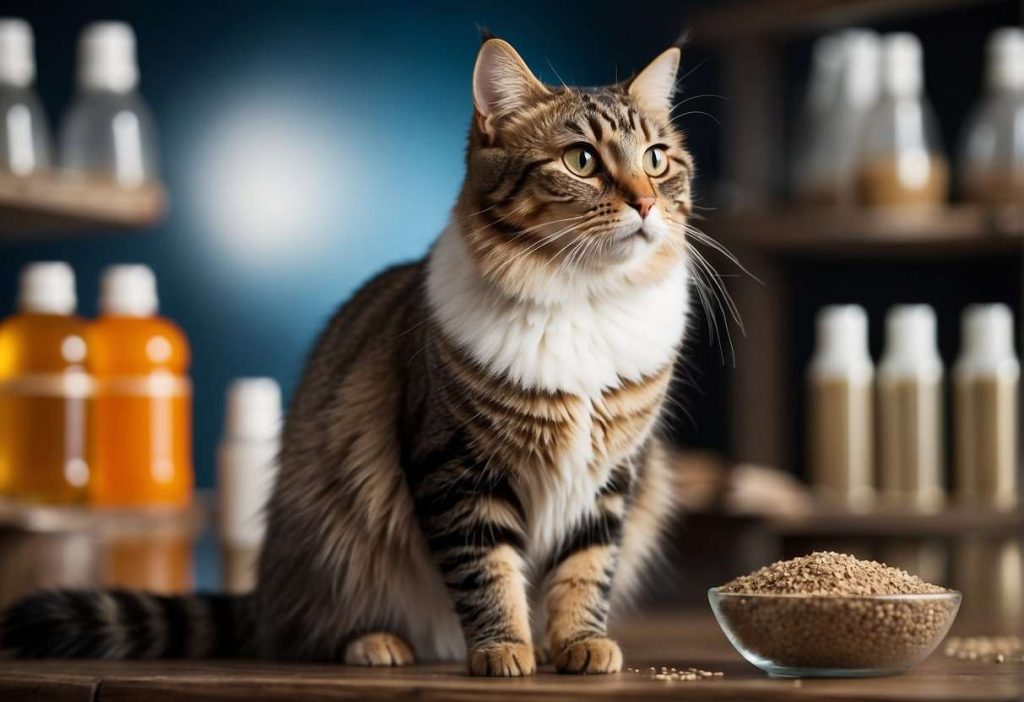
Spot-on Treatments:
- Pros: Easy to apply, long-lasting, and can prevent future infestations.
- Cons: Some cats may have skin sensitivity; and risks of incorrect dosage.
Oral Medications:
- Pros: No external residue; more comfortable for sensitive cats.
- Cons: Might be trickier to administer if your cat dislikes pills.
Flea Shampoos:
- Pros: Immediate relief; can wash away flea dirt effectively.
- Cons: Fleas may return quickly; not a long-term solution.
Flea Combs:
- Pros: Non-chemical, detects fleas early.
- Cons: Time-consuming and may miss some fleas.
Remember, while effectiveness is key, your cat’s comfort and health come first. Always consult your vet before trying new treatments, and keep an eye on how your cat reacts to the product.
A little vigilance goes a long way in keeping your purring companion happy and healthy!
Do you have the info you need? Now go forth and conquer those fleas—your feline friend is counting on you!
Quick Recap

Here’s what’s crucial to remember:
- Early detection matters. Regular grooming sessions are your best defense to spot those nasty specks.
- Not sure it’s flea dirt? Do the paper towel test: dampen a paper towel, place some specks on it, and wait for a reddish stain to form. That’s your clue. (7)
Flea Dirt Identification:
| Appearance | Texture | Presence |
| Black specks | Dry and crumbly, sometimes sticky | Mainly around the tummy and tail |
Why act fast? Flea dirt indicates an infestation which can lead to health issues for your cat:
- Skin irritation
- Allergies
- Transmitting other parasites
Thankfully, this is preventable. Be the super pet parent you are and keep flea treatments handy. Preventative measures go a long way.
And, don’t forget, a clean home is your second line of defense. No fleas = no flea dirt.
By now, you’re equipped with the know-how on flea dirt and why it’s more than just a nuisance. Remember, those little black dots are a red flag.
So, keep those grooming brushes close, and your vet even closer. Let’s keep those purring machines free of pests and full of cuddles!
Frequently Asked Questions
Navigating the plight of flea dirt on your beloved feline friend can be tricky. Here’s a quick roundup of the burning questions you might have, along with straightforward answers to keep your cat happy and healthy.
What does flea dirt look like on different cat fur colors?
Whether your cat’s coat is as black as night or as white as snow, flea dirt appears as tiny, dark specks.
On lighter fur, it’s quite conspicuous, but on darker fur, you might need a closer look.
How can I safely remove flea dirt from my cat’s fur?
The safest way is to start with a flea comb, gently combing through your cat’s fur. For the stickier bits, moisten a cloth with warm water and gently wipe the areas clean.
Remember to reward your kitty for their patience!
Is flea dirt a sign of a severe flea infestation?
Not necessarily severe, but it’s a definite sign that fleas are partying on your cat.
Take it as a prompt to check for live fleas and consider starting your cat on a flea prevention regimen.
What are the health risks associated with flea dirt on cats?
Flea dirt itself isn’t the villain; it’s the fleas that pose risks like irritating flea allergy dermatitis, tapeworms, and anemia, especially in kittens.
So, it’s not just about keeping them clean—it’s about keeping them healthy.
How often should I check my cat for flea dirt?
Make it a habit to check weekly. It’s a great way for you to bond and a smart preventive measure. Plus, it’s a good time to give them a quick health once-over.
Are there any effective natural remedies for flea dirt?
Indeed, some pet parents swear by natural remedies like diatomaceous earth or diluted apple cider vinegar.
But, always patch-test first and consult your vet, as cats have delicate systems.
Can flea dirt affect human health?
While flea dirt is mainly cat business, it indicates fleas that could potentially hop over. Fleas can bite humans and carry diseases, so it’s wise for you to keep your environment flea-free.


